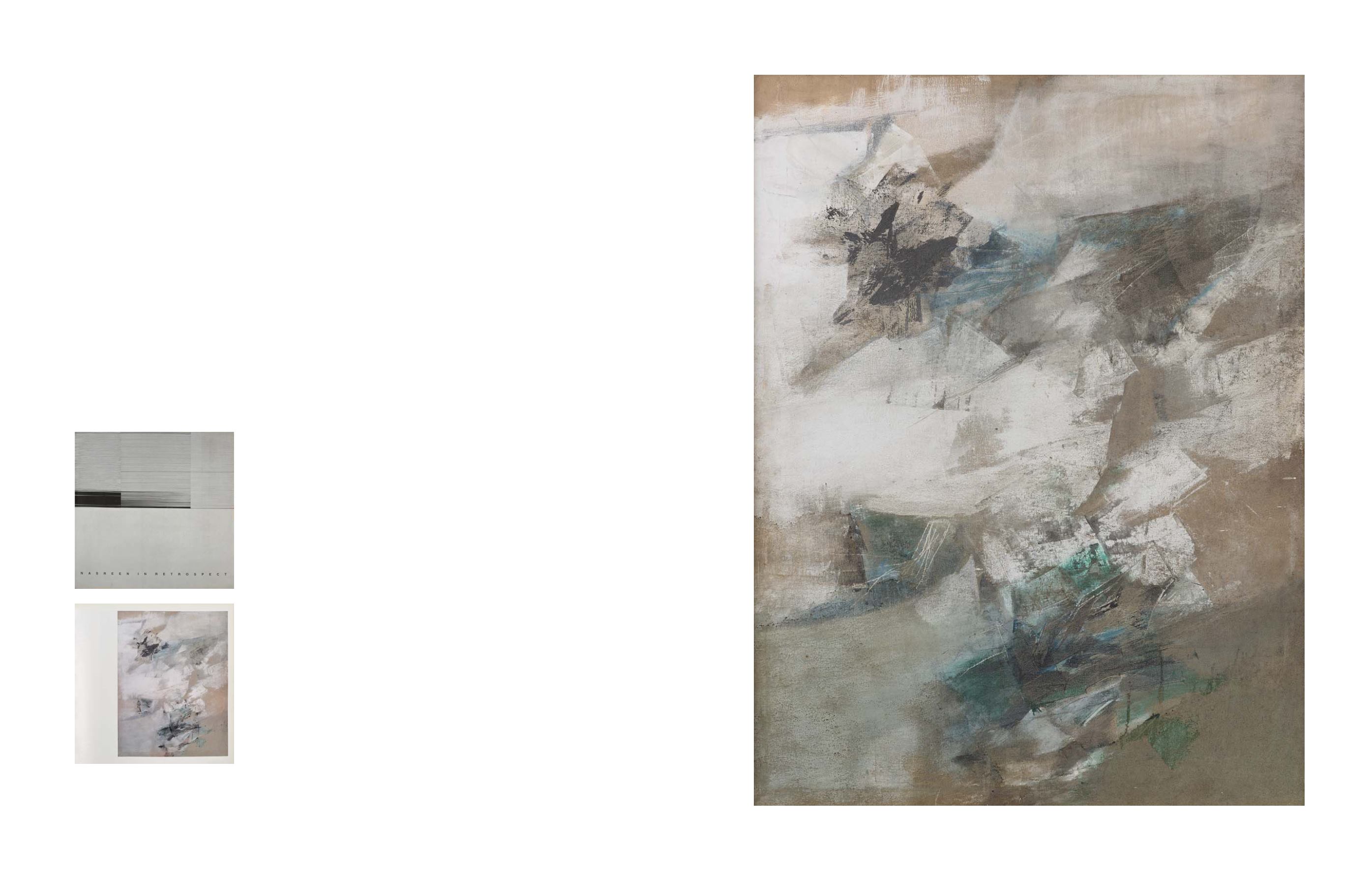

44
Saffronart | Evening Sale
PROPERTY FROM THE COLLECTION OF
GEETA KHANDELWAL, MUMBAI
14
NASREEN MOHAMEDI
(1937 ‒ 1990)
Untitled
Circa 1960
Oil on canvas
47.5 x 35.5 in (120.7 x 90.4 cm)
Rs 2,00,00,000 ‒ 3,00,00,000
$ 303,035 ‒ 454,550
PROVENANCE:
Acquired directly from the artist
PUBLISHED:
Altaf ed.,
Nasreen in Retrospective
, Bombay:
Ashraf Mohamedi Trust, 1995, p. 69 (illustrated)
Neville Tuli ed.,
The Flamed‒Mosaic: Indian
Contemporary Painting
, Ahmedabad: The
Tuli Foundation for Holistic Education & Art
(HEART), 1997, p. 223 (illustrated)
ThislargecanvasisoneofthestrongestexamplesofMohamedi’s
experiments with what was termed ‘lyrical abstraction’ during
this decade. The paintings from this period are considered the
“most agitated works in her entire oeuvre,” according to critic
Roobina Karode. Art critic and author Deepak Anant writes
of Mohamedi’s aloof expressiveness, which can be seen in the
present lot. “The restrained palette of mostly grey and earth
tones... thin applications of watercolour or oil paint that do
nothing to dissimulate the off‒white ground of the paper or
the canvas – contribute to the somewhat weather‒beaten
and yet faintly febrile aspect of these works.” (Karode, p. 252)
Mohamedi was one of the first Muslim women in modern
India to pursue a career in the arts. 1960 was a crucial decade
in the artist’s life. She returned to India after studying painting
at the St. Martin’s School of Art in London, and took part in
her first exhibition with Gallery 59 in 1961. Soon after, she was
awarded a French scholarship to study in Paris at Monsieur
Guillard’s atelier. When Mohamedi returned in 1963, her
personal life had been through much upheaval, and most
of her works and writings from this point forward reflected
a sense of despair that she constantly struggled to conquer.
During this period, Mohamedi travelled to Turkey, Iran,
Karachi, and Bahrain. The desert landscape, with its vast, scale‒
less expanses made a particular impact on her art. Around
this time, in a letter to Krishen Khanna when the latter was in
Ravensdale, Shimla, Ram Kumar wrote of Mohamedi: “Today
I was surprised to find Nasreen in my studio... She is the most
talented woman artist of our country. I wonder if you are well
acquainted with her work.” (
Critical Collective
, online)
Mohamedi, who died in 1990 at the age of 53, has in recent
years gained wide international acclaim for being ahead
of her time, though her oeuvre defies convention and
continues to remain somewhat enigmatic. A 2015‒2016
multi‒city exhibition of her work – a collaboration between
The Kiran Nadar Museum of Art, New Delhi, The Museo
Nacional Centro de Arte Reina Sofía in Madrid and the
Metropolitan Museum of Art in New York – set her clearly
among the leading non‒western abstract modern artists –
and a woman – to boot. The present lot was highlighted
for publication by her family in the 1995 book,
Nasreen in
Retrospective.
It is one of the few known Mohamedi oil on
canvas works and offers a rare and unusual glimpse into a
fleeting phase in the elusive artist’s creative journey. True to
her nature, she rarely provided clues to the orientation of
her works, leaving interpretation to the individual.
Cover of Altaf ed.,
Nasreen in Retrospective
, Bombay:
Ashraf Mohamedi Trust, 1995. Present lot illustrated
on p. 69
Image courtesy of the Heirs of Nasreen Mohamedi
45


















